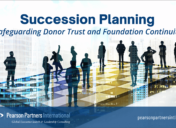Tips from the Leadership Coach: Decision-Making at the Top
Go Back to Searchlight Q2 2014
 Successful executives have many skills and qualities that enable them to excel in their roles and create value for their companies. These might include strategic thinking, vision, creativity, leadership, communications skills, emotional intelligence and decision making—to name just a few. However, superior decision making is arguably the most important ingredient for success, especially in the C-suite. In fact, as a June 2010 Harvard Business Review article by Blenko, Mankins and Rogers stated, “Ultimately, a company’s value is no more (and no less) than the sum of the decisions it makes and executes.”
Successful executives have many skills and qualities that enable them to excel in their roles and create value for their companies. These might include strategic thinking, vision, creativity, leadership, communications skills, emotional intelligence and decision making—to name just a few. However, superior decision making is arguably the most important ingredient for success, especially in the C-suite. In fact, as a June 2010 Harvard Business Review article by Blenko, Mankins and Rogers stated, “Ultimately, a company’s value is no more (and no less) than the sum of the decisions it makes and executes.”
The Decision-Making Process
Skilled decision makers typically follow a structured process. While processes vary, they usually include the following steps:
- Define the objectives. It is important to be clear about the decision to be made. What is the scope of the decision? What is the time frame? Who are the affected parties? Are there multiple decisions to be made? What uncertainties must be considered? What is not up for consideration?
- Frame the options. Be creative in considering possible solutions. Develop alternative choices that test the boundaries, and make sure the alternatives are collectively exhaustive and mutually exclusive.
- Evaluate the alternatives. For very big and potentially risky decisions, this is commonly done by building a decision support and financial model. Financial analysts, domain experts and decision-support professionals can be very helpful in this step. Most executives do not build decision models themselves, but are the internal customers for this work.
- Choose the solution. In one of Yogi Berra’s famous “Yogiisms,” he said, “When you come to a fork in the road, take it!” While that paradox is humorous, successful executives avoid the plight of analysis paralysis by knowing when enough analysis has been performed and it is time to make a decision.
- Execute the plan. Value is created in the successful execution of decisions. Without good implementation, the solution may not be realized. The execution plan should be developed in conjunction with the decision-making process, not subsequent to it.
A Failure to Communicate
Failing to effectively communicate the decision with employees, vendors, partners, investors and other stakeholders is a common error that can cause confusion and negative consequences. Communication is not a single step, but an integral part of the entire process.
Decision Making in the C-Suite
Decision making is an important skill for all executives. However, the way C-suite leaders make decisions can be quite different, especially for the chief executive officer. Here is how the process outlined above might be different for decision makers at the top of an organization:
- Strategy vs. tactics. C-suite leaders decide a company’s strategy, mission and vision. They employ and rely on their teams to spend time on tactical decisions.
- Decision teams. C-suite leaders rely on their teams to assist them with strategic decisions. Whether it’s spinning off a business unit, entering a new market, relocating a large manufacturing plant or some other transformational opportunity, CEOs and other C-suite leaders work with subject-matter experts, decision analysts and support personnel to develop and evaluate alternatives. The role of the C-suite leader is typically to make the final decision, rather than to perform the analysis.
- Buy-in. C-suite leaders recognize that having a good solution is useless if employees and other stakeholders do not buy in to the decision, and they spend considerable effort working to win the hearts and minds of their organizations. Almost every significant decision has some embedded call to action. The success of the solution will depend on adoption and execution by people other than those in the C-suite.
- Decisiveness. C-suite leaders are decisive. They make choices quickly and confidently. This should not be confused with being stubborn, inflexible or hard-headed. A decisive leader can inspire confidence in the plan and help the organization focus on its execution. A stubborn leader can foster resentment and an “us vs. them” mentality.
- Portfolios vs. projects. At the top of organizations, decision makers tend to focus more on their portfolio of opportunities rather than on individual projects. This can maximize value in several ways: Risk is managed at the portfolio level rather than at the project level; resources are better allocated on a portfolio basis; and C-suite leaders, shareholders and boards share a similar view of the company.
- Communication. The effects of C-suite leaders’ decisions can be quite different than those of other decision makers. Since these decisions can have a significant impact on share price, the method and content of the communication must be considered from a legal viewpoint. Also, different levels of the organization may view a transformational decision differently. Consideration should be given to stakeholders’ excitement as well as the concerns or fears they might have when facing change or an uncertain future.
As managers are promoted to higher-level leadership positions, they should evaluate their decision-making skills and whether they need to make adjustments to better match those of the C-suite. Decision making is a skill that can be learned, practiced and improved upon. It is one of the fundamental skills all leaders should possess, and one that aspiring leaders should learn to perfect.














